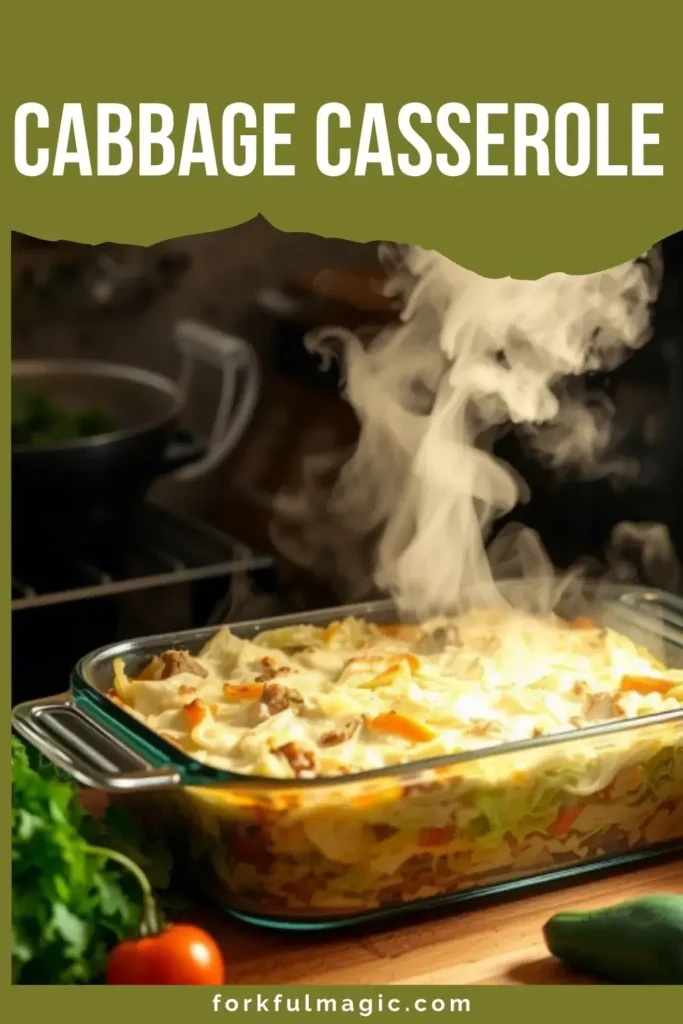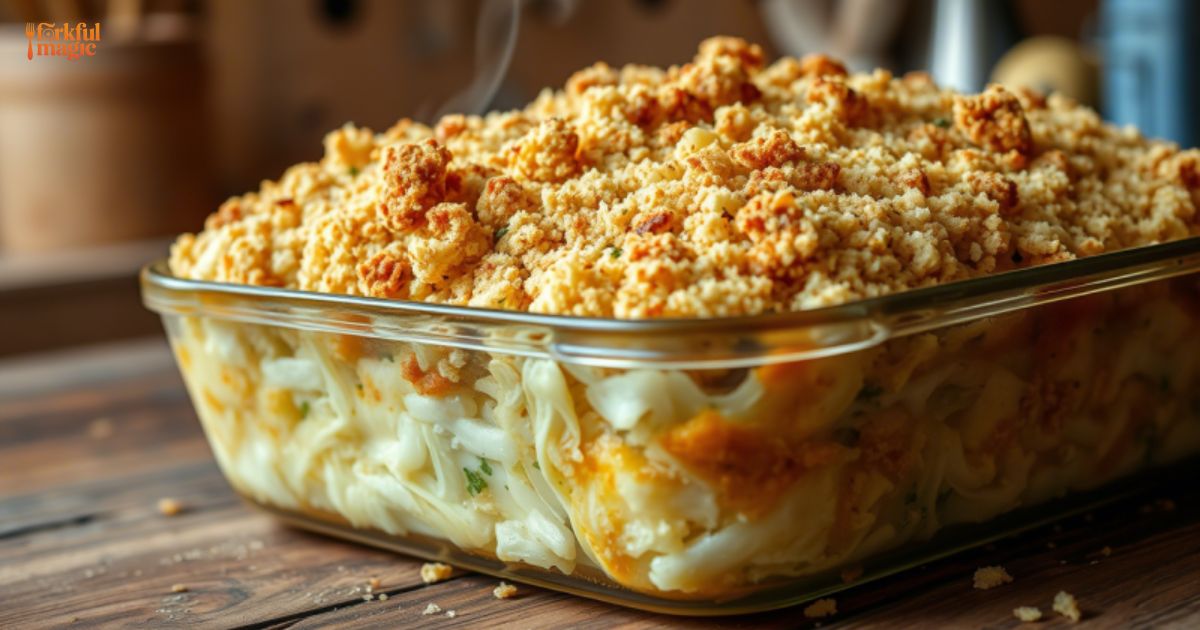Have you ever bitten into a dish that feels like a warm hug? That’s what cabbage casserole does. It’s a simple dish, yet it carries a weight of comfort and nostalgia. Growing up, my grandma would whip this up during family gatherings. The aroma of garlic, onions, and simmering cabbage would fill the house. It was more than just food; it was a tradition.
Cabbage casserole stands out not just for its flavors but also for its unique blend of textures. Soft, tender cabbage meets rich, savory layers of meat, cheese, and spices. This dish is a canvas for creativity, allowing cooks to adapt it to their tastes and dietary needs. Let’s dive into what makes this casserole special and how you can master it.
Ingredients & Substitutions
When it comes to cabbage casserole, the ingredient list is flexible. Here’s what you’ll typically need:
- Cabbage: About 1 medium head, chopped. Green cabbage is classic, but Savoy or Napa can add a twist.
- Ground Meat: 1 pound (beef, pork, turkey, or a mix). For a vegetarian option, use lentils or mushrooms.
- Onion: 1 large, diced. Shallots can add a sweeter flavor.
- Garlic: 2-3 cloves, minced. Fresh garlic is best; dried loses some punch.
- Tomato Sauce: 1 can (15 oz). You can swap this for crushed tomatoes for a chunkier texture.
- Cheese: 1-2 cups shredded (cheddar, mozzarella, or a mix). Vegan cheese works, too.
- Rice or Quinoa: 1 cup, uncooked. This binds the casserole together. For a low-carb version, use cauliflower rice.
- Herbs and Spices: Salt, pepper, and your choice of dried herbs. Fresh thyme or basil can elevate the dish.
Selecting fresh ingredients is key. Fresh cabbage offers crispness and a slight sweetness that dried or wilted cabbage can’t match. Similarly, using high-quality meat enhances the overall flavor. If you’re going for a healthier option, lean meats or plant-based proteins won’t compromise taste.
Step-by-Step Instructions

Let’s break this down into manageable steps.
- Preparation: Start by preheating your oven to 350°F (175°C). Chop the cabbage and onion, and mince the garlic. It’s all about mise en place here!
- Cooking the Meat: In a large skillet, heat some oil over medium heat. Add the onions, cooking until translucent. Then, toss in the garlic, sauté for a minute. Now, add the ground meat, breaking it up. Cook until browned. Make sure not to overcrowd the pan—this can lead to steaming instead of browning.
- Cabbage Time: Add the chopped cabbage to the skillet. It may seem like a lot, but it wilts down significantly. Stir it all together. Season with salt, pepper, and your favorite herbs.
- Layering: In a large baking dish, spread half of the cabbage mixture on the bottom. Then, sprinkle half of the rice or quinoa on top. Pour half the tomato sauce over this layer. Add a layer of cheese. Repeat these layers until you use everything, finishing with cheese on top.
- Baking: Cover the dish with foil to prevent burning the cheese. Bake for about 45 minutes. Remove the foil and bake for another 15 minutes until bubbly and golden.
Common mistakes? Overcooking the cabbage can lead to a mushy texture. Aim for tender but not falling apart. Also, don’t rush the browning process; it adds depth of flavor.
Cooking Techniques & Science
Why do we cook the meat first? Searing locks in juices and flavors. The Maillard reaction—when proteins and sugars react under heat—creates those beautiful brown bits that add depth.
The layering technique in casseroles helps distribute flavors evenly. Each ingredient has its moment to shine, melding together during baking. The starch in rice or quinoa absorbs moisture, binding everything.
Using the right tools matters too. A good, heavy skillet ensures even heating, while a quality baking dish retains heat, promoting even cooking.
Serving & Pairing Suggestions
Presentation can elevate your dish. Serve the casserole in the baking dish for a rustic feel. Garnish with fresh herbs for a pop of color. Pair it with a crisp side salad or some crusty bread. A glass of red wine complements the rich flavors beautifully.
Consider serving it alongside roasted veggies or a light soup. These pairings balance the richness of the casserole.
Conclusion
Cabbage casserole isn’t just a meal; it’s a story on a plate. It’s about comfort, creativity, and connection. The versatility of ingredients allows for endless variations. Whether you stick to tradition or explore new flavors, this dish has something for everyone.
As you cook, keep experimenting. Try different meats, spices, or even add some heat with chili flakes. Remember, cooking is about enjoyment and exploration.
FAQs
1. Can I make cabbage casserole ahead of time?
Absolutely! You can prepare it the day before and refrigerate it. Just increase the baking time when you’re ready to cook.
2. How long does leftover cabbage casserole last?
Stored in an airtight container, it can last about 3-4 days in the fridge. Reheat thoroughly before serving.
3. Can I freeze cabbage casserole?
Yes! It freezes well. Just wrap it tightly in plastic wrap and foil. Thaw in the fridge overnight before baking.
4. What are some variations I can try?
You could add beans for more protein, switch the cheese for a vegan option, or even throw in some diced peppers for extra flavor.
5. What’s the best way to reheat leftovers?
Oven reheating is best to keep it crispy. Cover with foil to prevent drying out, then heat at 350°F until warmed through.
Embrace the warmth of cabbage casserole. It’s more than just a dish; it’s a culinary journey waiting for you to embark on. Enjoy!








